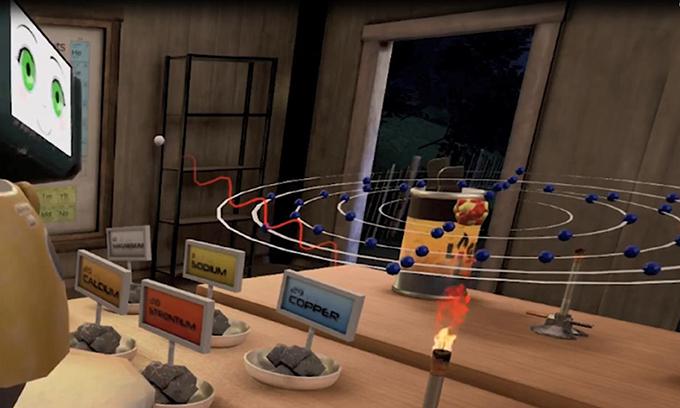How VR & AR Are Revolutionizing Immersive Learning in Modern Education
The world of education is evolving at a breathtaking pace, and two game-changing technologies—Virtual Reality (VR) and Augmented Reality (AR)—are at the forefront of this transformation. immersive learning powered by VR & AR is reshaping how students engage with content, understand complex concepts, and retain knowledge. This article explores how VR and AR are revolutionizing modern education, their benefits, successful case studies, and practical tips for educators seeking to integrate these technologies into their classrooms.
Understanding VR & AR in Education
Virtual Reality (VR) creates a wholly simulated environment, allowing users to immerse themselves in experiences that replicate real-world or fantastical scenarios. augmented Reality (AR), on the other hand, overlays digital information—images, sounds, or text—onto the real world. These technologies offer interactive, multisensory experiences that encourage active and experiential learning, making even the most abstract concepts tangible and engaging.
- VR Headsets: devices like Oculus Quest or HTC Vive enable students to explore virtual 3D worlds.
- AR Applications: Tools such as Microsoft HoloLens or smartphone-based apps superimpose learning materials onto physical environments.
Benefits of Immersive Learning with VR & AR
When integrated thoughtfully, VR and AR offer distinct advantages over conventional learning methods:
- enhanced Engagement: Interactive simulations and gamified lessons capture students’ attention, motivating them to learn.
- Better Knowledge Retention: Experiential learning through practical application helps embed knowledge deeply.
- Immediate Feedback: VR & AR can provide real-time feedback, allowing students to learn from mistakes without risk.
- Accessibility: Students with diffrent learning styles or special needs benefit from customizable virtual environments.
- Remote Collaboration: Virtual classrooms connect learners worldwide, supporting teamwork and social learning.
Key Educational Applications of VR & AR
- Science and Medicine: Dissecting virtual frogs or practicing surgical techniques empowers students without the constraints of physical materials.
- History and Geography: time travel to ancient civilizations or explore global landmarks from your classroom.
- Language Learning: Converse with virtual native speakers and immerse in cultural settings.
- Vocational Training: Simulate hazardous jobs and technical skills safely—and cost-effectively.
Case Studies: How VR & AR Transform Learning
Stanford medical School’s VR Lab
Stanford University uses VR simulations for surgical training, allowing medical students to perform virtual procedures and learn anatomy in 3D. This approach drastically reduces costs and risks, while improving competence before students ever enter an operating room.
Google Expeditions in Primary Education
Google Expeditions lets students embark on virtual field trips using AR and VR. Imagine a geography class “walking” through the Amazon rainforest or a science lesson inside the structure of a cell. Teachers report higher engagement and curiosity,with students retaining information longer than through textbooks alone.
Chemistry Lessons at the University of Glasgow
The University of Glasgow implemented AR in their chemistry classes to visualize molecular structures. By manipulating molecules in augmented space via tablets, students reported greater understanding of complex interactions and increased enthusiasm for the subject.
Corporate Training at Walmart
Walmart launched VR-based employee training, simulating customer interactions and emergency situations. According to Walmart’s learning innovation manager, VR training increased knowledge retention by 30% and reduced training times significantly.
Practical Tips for Implementing VR & AR in Education
If you’re ready to bring immersive learning technologies into your curriculum, consider these proven strategies:
- Start Small: Pilot VR/AR modules with a single lesson or subject before scaling across classrooms.
- Choose User-Kind Tools: Opt for applications and hardware that are intuitive for both students and teachers.
- Align with Learning Objectives: Ensure that technology supports curriculum goals, not just novelty or distraction.
- Prepare Adequate Training: Offer teachers professional development to master VR & AR technologies.
- Ensure Accessibility: Select platforms that comply with accessibility standards for inclusive education.
- Encourage Collaboration: Use VR & AR to facilitate group projects,peer-to-peer interaction,and co-creation.
- Monitor and Evaluate: Measure engagement, progress, and outcomes, and adjust usage as needed for optimal results.
Overcoming Challenges in VR & AR Adoption
- Cost and Infrastructure: While the price of devices is dropping, initial investments can be significant. Grants and partnerships with tech companies can alleviate this.
- Content Availability: While there is growing educational content for VR & AR, educators may need to customize experiences or collaborate with developers.
- Technical Support: IT departments should be involved from the start for seamless integration and troubleshooting.
- Screen time Concern: Balance immersive activities with traditional learning to avoid digital fatigue.
Firsthand Experiences: Voices from the Classroom
“When my students toured the ancient pyramids in VR, their engagement soared. even those who normally struggle became passionate learners for the day.”
— Mrs. Hannah, Middle School History Teacher
“AR models helped my biology class understand cell division far better than diagrams. It’s powerful to manipulate structures as if thay’re really there.”
— Dr. S. Lee, High School Science Teacher
The Future of Immersive Learning in Modern Education
As VR and AR become more affordable and accessible, their use in education will continue to expand. Emerging trends include:
- AI-driven adaptive learning environments that respond to individual student needs.
- Global virtual classrooms connecting learners from diverse backgrounds.
- Mixed reality labs blending physical and digital experiences for STEAM subjects.
Conclusion: Embracing VR & AR for Effective Immersive Education
VR and AR are no longer futuristic fantasies—they’re practical tools making education more immersive, inclusive, and effective. By embracing these technologies,schools,colleges,and training facilities can create richer learning experiences,nurture critical skills,and inspire lifelong curiosity. As technology advances and adoption barriers fall, immersive learning will become a vital part of modern education, preparing students for a dynamic and interconnected world.
Ready to Transform Your Classroom?
Start exploring VR & AR today and unlock a world of possibilities for your learners. For further reading, explore resources from Edutopia and Education Dive. Enjoy your journey into the future of immersive education!

